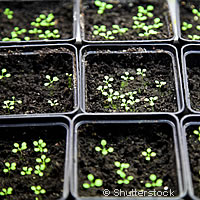Research reveals rapid mutation rate of plant genomes
New research published in the journal Science describes how a research team studied the entire genome sequence of a plant over 30 generations to understand the speed at which genetic mutations occur in plants. The findings shed new light on how plants become resistant to herbicides and could aid efforts to develop plants that are resistant to drought, for example. The research was part of the ARELATIVES ('Leveraging the genome sequences of two Arabidopsis relatives for evolutionary and ecological genomics') project, which is financed to the tune of EUR 2.2 million through the EU-funded Plant Genomics ERA-NET (ERA-PG). ERA-PG brings together national research funding bodies from 17 countries and is supported by the Sixth Framework Programme (FP6). 'While the long-term effects of genome mutations are quite well understood, we did not know how often new mutations arise in the first place,' said Dr Detlef Weigel, a director at the Max Planck Institute for Developmental Biology in Germany, who led the research along with colleagues at Indiana University in the US. Comparing the genomes of plant and animal species is common scientific practice now, but the research team took this a stage further by studying all the genetic changes in five varieties of the flowering plant Arabidopsis thaliana (commonly known as mouse ear cress) over 30 generations. Their goal was to identify the differences between the genome of the final generation and the genome of the first generation. The research found that over several years 20 DNA building blocks (also called base pairs) had mutated in each of the 5 varieties of Arabidopsis. 'The probability that any letter of the genome changes in a single generation is thus about 1 in 140 million,' explained Professor Michael Lynch of Indiana University. This means in effect that each Arabidopsis seedling has, on average, one new mutation in each of the two new copies of the genome that it inherits from its parents. Finding these tiny alterations meant extraordinarily painstaking work for the team which had to check each letter in each genome 30 times. Dr Weigel said, 'To ferret out where the genome had changed was only possibly because of new methods that allowed us to screen the entire genome with high precision and in very short time.' The research made clear to the team just how changeable genomes are. Although the number of mutations in the Arabidopsis plants seemed small (in a group of 60 million Arabidopsis plants, each letter in the genomes changes once, on average), when considering that the plant produces thousands of seeds in one generation, the speed of the mutations seems remarkable. The research results will now allow scientists to better calculate when different species split. For example, A. thaliana and its closest relative Arabidopsis lyrata have many different traits including lifespan and the type of flowers they produce. Previous research had suggested that the species split 5 million years ago, but the new research shows that it was probably 20 million years ago. The research results will have many positive benefits including a better understanding of why and how plants become resistant to herbicides and how plant breeders can find genome mutations to increase crop yield or to make plants more resistant to drought. The team suggests that genome mutation in humans is at least as fast as in plants. Professor Lynch said, 'If you apply our findings to humans, then each of us will have on the order of 60 new mutations that were not present in our parents. With more than 6 billion people on our planet, this implies that on average each letter of the human genome is altered in dozens of fellow citizens. Everything that is genetically possible is being tested in a very short period.'
Countries
Germany, United States



